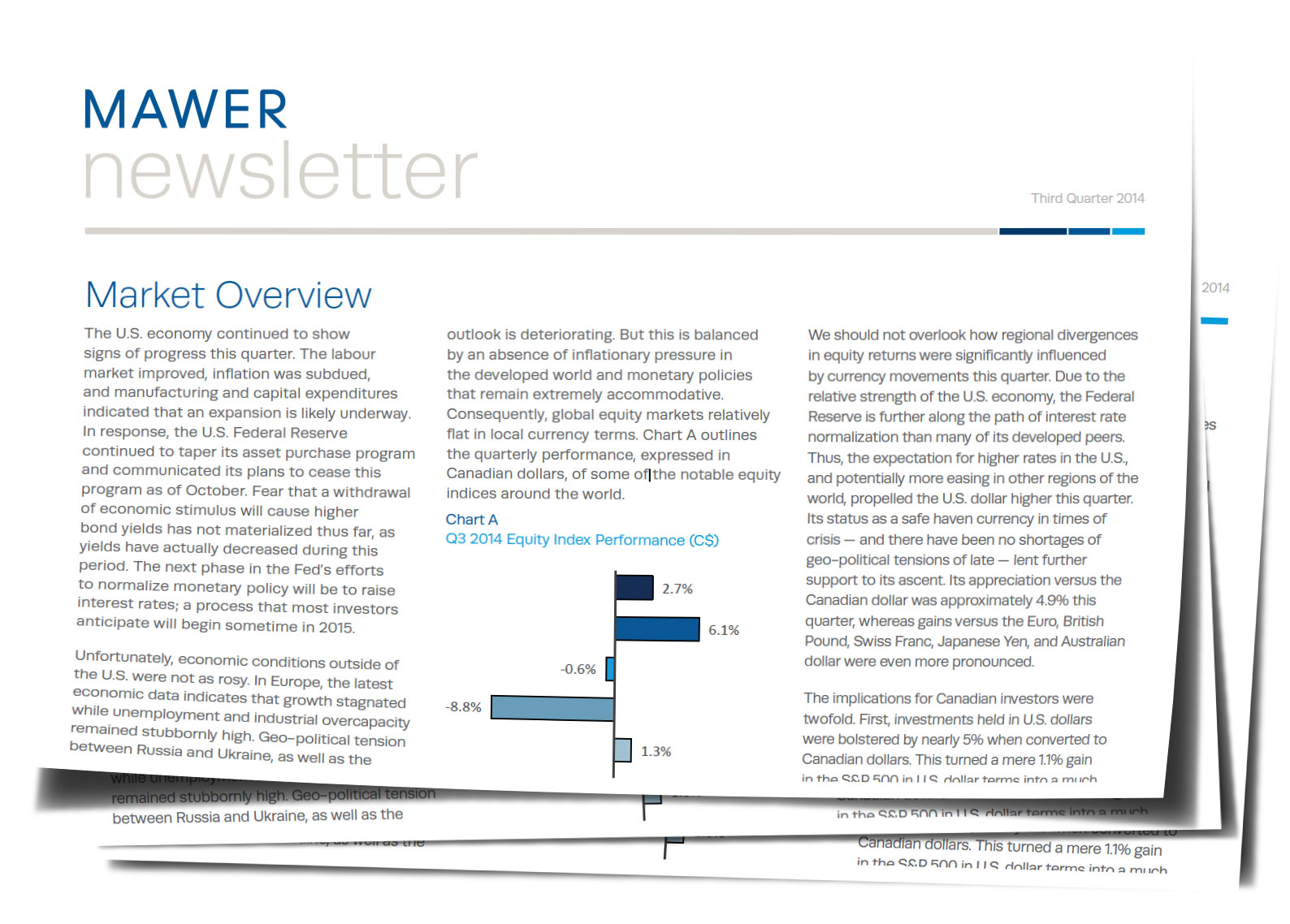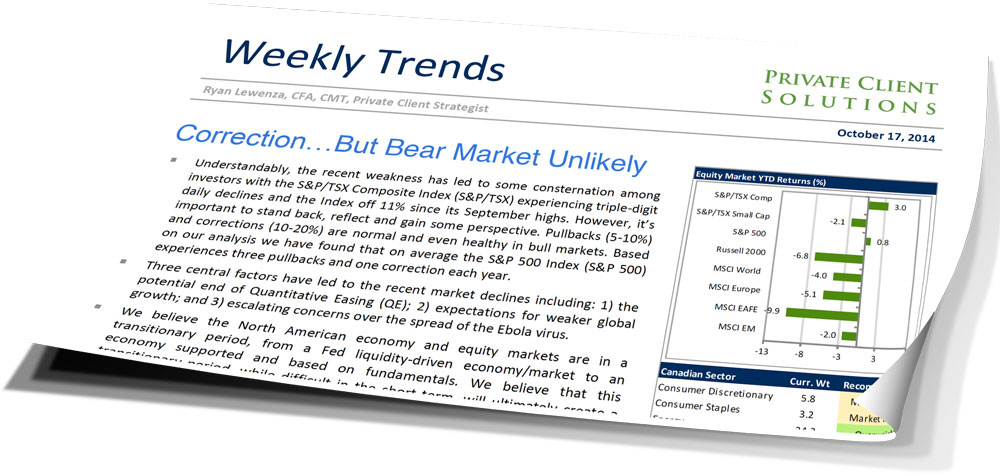by Mawer Investment Management
The U.S. economy continued to show signs of progress this quarter. The labour market improved, inflation was subdued, and manufacturing and capital expenditures indicated that an expansion is likely underway. In response, the U.S. Federal Reserve continued to taper its asset purchase program and communicated its plans to cease this program as of October. Fear that a withdrawal of economic stimulus will cause higher bond yields has not materialized thus far, as yields have actually decreased during this period. The next phase in the Fed’s efforts to normalize monetary policy will be to raise interest rates; a process that most investors anticipate will begin sometime in 2015.
Unfortunately, economic conditions outside of the U.S. were not as rosy. In Europe, the latest economic data indicates that growth stagnated while unemployment and industrial overcapacity remained stubbornly high. Geo-political tension between Russia and Ukraine, as well as the Scottish referendum on independence, created additional uncertainty that weighed on European sentiment. To encourage growth and combat a deflationary scenario, the European Central Bank (ECB) announced their version of an asset purchase program, or quantitative easing. By acquiring non-performing loans from European bank balance sheets, the ECB hopes that the banks will renew credit to corporations, thereby promoting growth. However, while European banks certainly need to clean up their books, it is unknown whether the demand for the additional credit truly exists. This “pushing on a string” argument is top of mind among many investors.
In Japan, GDP contracted sharply this quarter as both consumer spending and capital expenditure declined. In part, this was in response to the sales tax increase from 5% to 8%. This suggests that there is much uncertainty whether Prime Minister Abe’s economic reforms will reinvigorate growth in Japan and pull the nation out of its long-standing deflationary quagmire. Meanwhile, in China, the banking system remains under pressure given the abundance of bad loans linked to an overheated real estate market. It is unclear how authorities will tackle this program, but the result of their actions could have a far-reaching global economic impact.
Overall, the global economic picture is mixed, with evidence suggesting that the growth outlook is deteriorating. But this is balanced by an absence of inflationary pressure in the developed world and monetary policies that remain extremely accommodative. Consequently, global equity markets relatively flat in local currency terms. Chart A outlines the quarterly performance, expressed in Canadian dollars, of some of
Read/Download the complete Mawer Market Overview Q3 2014, below:
Mawer Investment Newsletter 3Q14
Mawer Investment Management















